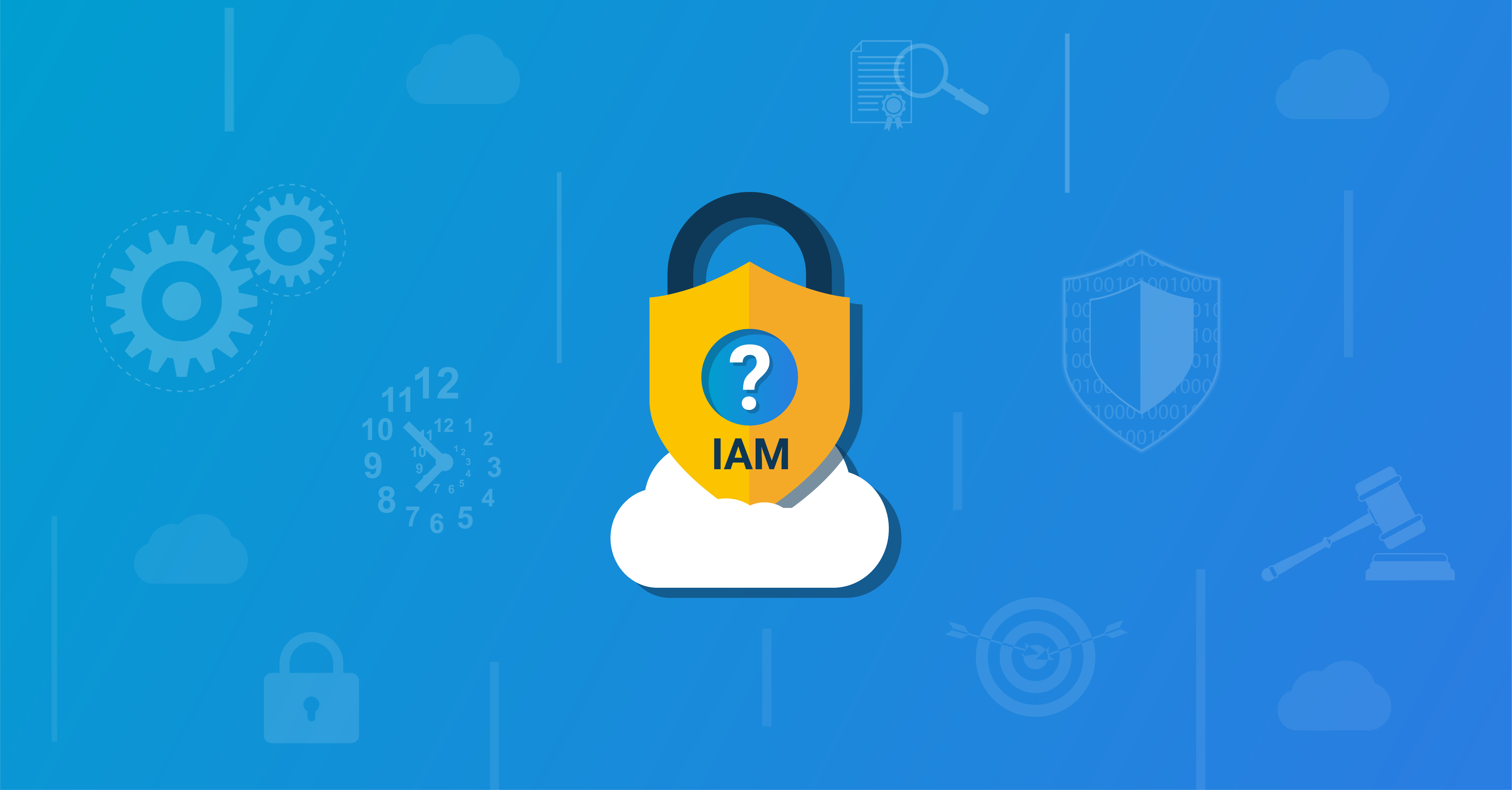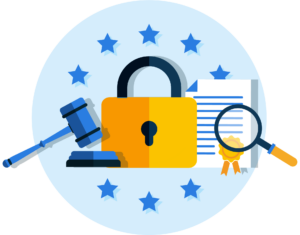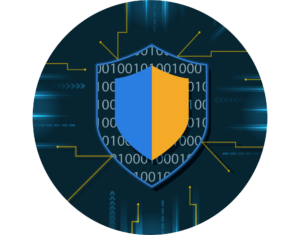
Why do you need an IAM solution?
The Identity & Access Management (IAM) market has seen an exponential surge in demand lately, and there’s no end in sight to this rapid expansion. According to Marketsandmarkets, the IAM industry is projected to nearly double between 2022 and 2027, reaching $25.6 billion. Recent studies by Forrester indicate that a significant portion of this investment will go into cloud-based IAM solutions. In fact, over 80% of IT decision-makers have either already transitioned to cloud-based IAM or intend to within the next two years. So, is the cloud the primary engine fueling the growth in the IAM sector, or are there other catalysts at play? And why should your organization consider implementing an IAM strategy? In this blog, we’ll delve into the key reasons for adopting an IAM solution within an organization.
In this article
Identity & Access Management
Tools4ever has now been a major player in the Identity & Access Management market for over 20 years. And during that time, we have witnessed an evolution in why clients implement an IAM solution. But before delving into this transformation, it’s crucial to clarify what an IAM solution encompasses and its functionalities.
Identity & Access Management includes processes, policies, and systems that manage users’ digital identities in a secure and streamlined manner.
Identity & Access Management serves as an umbrella term that incorporates a range of technologies including “User Provisioning,” “Service Automation” and “Access Management”. Each of these categories further comprises elements such as “identity lifecycle management”, “workflow management” and “single sign-on”, among others. In essence, Identity & Access Management operates on three foundational principles to ensure that the appropriate users gain the correct access to the necessary applications at the right time: identification, authentication and authorization. When users want to access systems or data, they initiate access by identifying themselves, typically using a username linked to their account. Following successful identification, the applicable authentication process like passwords or tokens is deployed to verify their identity. Finally, when users have the required authorizations, they are granted access to the information they need.
Why an IAM solution?
In the very definition of IAM, two pivotal terms immediately stand out: secure and streamlined. Historically, the focus has largely been on the latter, encompassing aspects like efficiency and cost-cutting. However, in recent years, due to tightening laws and regulations, the emphasis has shifted more towards compliance and security. In the following sections, we’ll delve deeper into these driving factors and discuss some of the prevalent challenges.
Efficiency and cost reduction
Organizations today employ a diverse array of applications that operate both on-premises and in the cloud, each with its own set of standards and protocols. The surge in cloud-based applications has made it increasingly challenging for IT departments to integrate these applications cohesively and implement uniform security measures across them. This is largely because each application typically maintains its own user database, resulting in a proliferation of isolated identity silos. The management of all these accounts and their respective permissions often falls on IT departments, creating a manual and error-prone task. For the broader organization, this translates into a diminished user experience and a decline in overall productivity.

Manual mutation management
When a new employee joins the organization, they need access to a range of applications and systems, each with its own set of required permissions. However, the process doesn’t end there. As the employee progresses within the company, their role may change, necessitating modifications to their existing permissions or even a complete overhaul of their access rights. Determining which permissions to retain, add or revoke becomes a complex task. Furthermore, life events like marriage or divorce may prompt a name change, requiring updates across numerous user profiles. There may also be instances where cross-functional projects grant the employee temporary access to sensitive folders, such as financial records, which must be revoked once the project concludes. Finally, when an employee exits the organization, for whatever reason, it’s crucial to revoke their access rights and deactivate their accounts promptly.
These are merely a few of the numerous possible changes that a user might experience. Ensuring accuracy is crucial, but timeliness is also paramount. Considering the complex interplay of various components—like a manager hiring a new employee, an HR representative entering this data into the HRM system, and then coordinating with the IT department to allocate the necessary resources—the task becomes highly challenging if one tries to manage it manually while also striving for efficiency and effectiveness.
Diminished user experience and decreased productivity
For staff members, relying on manual change management often leads to an unsatisfactory user experience. In an era where organizations are eagerly seeking new talent, it’s essential for new hires to enjoy a seamless onboarding process and become productive immediately. However, delays in granting access to vital information, or the burden of remembering multiple login credentials for various applications, can result in frustration and diminished productivity. Striking a balance between an efficient IT department and a positive user experience, while also maintaining robust security and control measures, becomes exceptionally challenging when manual processes for user authorization are in place.
Numerous help desk requests
Based on research by Gartner, between 30 and 50 percent of IT help desk tickets concern password resets and account reactivations. As a result, service desk staff dedicate a significant portion of their time to these relatively straightforward yet repetitive tasks, which can cost upwards of $40 per ticket. Additionally, while employees are waiting for their passwords or accounts to be reset, their productivity suffers. This can add up to a substantial annual expense for both the IT department and the organization as a whole. Lacking an Identity and Access Management (IAM) system, it’s difficult to fault the employees. After all, keeping track of a multitude of complex username and password combinations—comprising at least 8 characters that include uppercase and lowercase letters, numbers and special characters, all of which need to be updated regularly and accessed from various devices—is no small feat.
Another frequent trigger for IT help desk tickets is issues with authorization. This could range from not having access to a specific application to having insufficient permissions within that application. Someone taking the lead on a new project may also require a dedicated network folder. Such requests typically land at the help desk, as the users know they are the team familiar with managing these issues. But how can the help desk be certain that a request is legitimate? And when someone calls how do they know if the person on the phone is really that person at all? The ensuing process often involves the help desk personnel reaching out to the requester’s supervisor for confirmation, waiting for approval, logging this information in an IT Service Management (ITSM) solution, and finally granting the necessary permissions to the employee. This is a complicated, time-intensive procedure with ample opportunities for mistakes.
High software license fees
On average, roughly one-third of an IT budget goes toward both on-premises and Software as a Service (SaaS) software licenses. Specialized software like Microsoft Visio and Adobe Creative Suite in particular can be costly. These licenses are often paid for on a per-user basis. Yet, studies indicate that billions of dollars are wasted annually on unused licenses. A quick calculation can reveal significant potential savings if licenses are allocated only as needed. An Identity and Access Management (IAM) system can facilitate this by regulating even sporadic usage and automatically revoking temporary access when appropriate.
Legal and regulatory compliance requirements
In recent years, there has been a tightening of laws and regulations, such as the General Data Protection Regulation (GDPR), that hold organizations accountable for the secure and proper management of customer and employee data. Today’s organizations are required to have well-defined procedures outlining who has access to specific types of information and how this information is safeguarded. In turn, auditors strictly enforce compliance, as well as regulatory bodies such as the Personal Data Authority (AP).

Accumulation of rights and conflicting permissions
When it comes to authorizations, a lot often goes wrong in organizations. While granting access usually doesn’t pose much of a problem—since users will often alert the team if they lack necessary permissions—the reverse is rarely true. Employees are unlikely to voluntarily report that they have excessive access and should have their permissions revoked. As a result, once granted, rights are seldom rescinded. Whether an employee temporarily requires Visio for a project, joins a committee for a year, or switches roles or departments, their access rights often accumulate over time. This accumulation of permissions can even escalate into more problematic scenarios, such as conflicting or “toxic” permissions. A classic example is an employee who has the ability to both approve and process payments for invoices, a situation ripe for potential abuse.
Over time, users may amass a range of rights they aren’t strictly “entitled” to, but which go largely unnoticed or unaddressed. Even managers often prioritize an employee’s ability to complete their tasks over the potential risk of unauthorized access to sensitive data. Furthermore, it’s debatable whether managers are even aware of or equipped to monitor these accumulating permissions.
Copy user instead of least privilege
Adopting a ‘copy user’ policy in your organization on top of that, can quickly lead to a security nightmare. Information security management frameworks like ISO 27001 and 27002, Baseline Information Security Government and NEN 7510 all emphasize the principle of least privilege. Users should only have access to the applications and information strictly necessary for their job functions, nothing more. IT departments are then tasked with proving that this principle is consistently applied. Manual processes struggle to keep pace with such requirements, let alone generate reports or trace how specific permissions were granted. These are all challenges that an Identity & Access Management (IAM) system can effectively address.
Data breach protection
Nowadays, reports of large-scale hacks, ransomware attacks and data breaches make headlines almost daily, underscoring the booming nature of cybercrime. Cybercriminals are becoming increasingly sophisticated, executing extensive attacks aimed at securing sensitive corporate and personal information. The financial toll of a data breach can be significant. For example, consider the recent ransomware attack on Media Markt that severely disrupted their business operations. Beyond the immediate costs, regulatory bodies like the Personal Data Authority are issuing hefty fines for organizations that fail to maintain proper security measures or to report incidents in a timely fashion. There’s also the immeasurable cost of reputational damage to consider. As such, it’s imperative for organizations to implement robust strategies to prevent data breaches.

Human error
Despite best efforts, human error is inevitable. Employees still click on malicious links, even after undergoing annual cyber security training. An IT staff member might mistakenly duplicate permissions from one employee, who is also part of the works council, to another in a similar role, or might neglect to deactivate the account of a terminated employee. An Identity & Access Management (IAM) system can mitigate the risks and consequences associated with compromised accounts. It achieves this by enforcing strong authentication protocols, limiting permissions to the bare essentials, and promptly deactivating orphaned or unnecessary accounts. In doing so, it safeguards against unauthorized access to sensitive corporate data from both insiders and outsiders.
So why do you need an IAM solution?
Earlier, we outlined typical challenges that organizations face when they haven’t yet implemented a (well-configured) IAM solution. If any of these issues resonate with you, it might be time to consider formulating an IAM strategy for your organization. In the next blog we will elaborate on exactly how User Provisioning technology within an Identity & Access Management solution can address these issues.
Interested in discovering what Tools4ever’s IAM solutions can offer? Download our white paper on Identity as a Service or get in touch for a complimentary demo!
